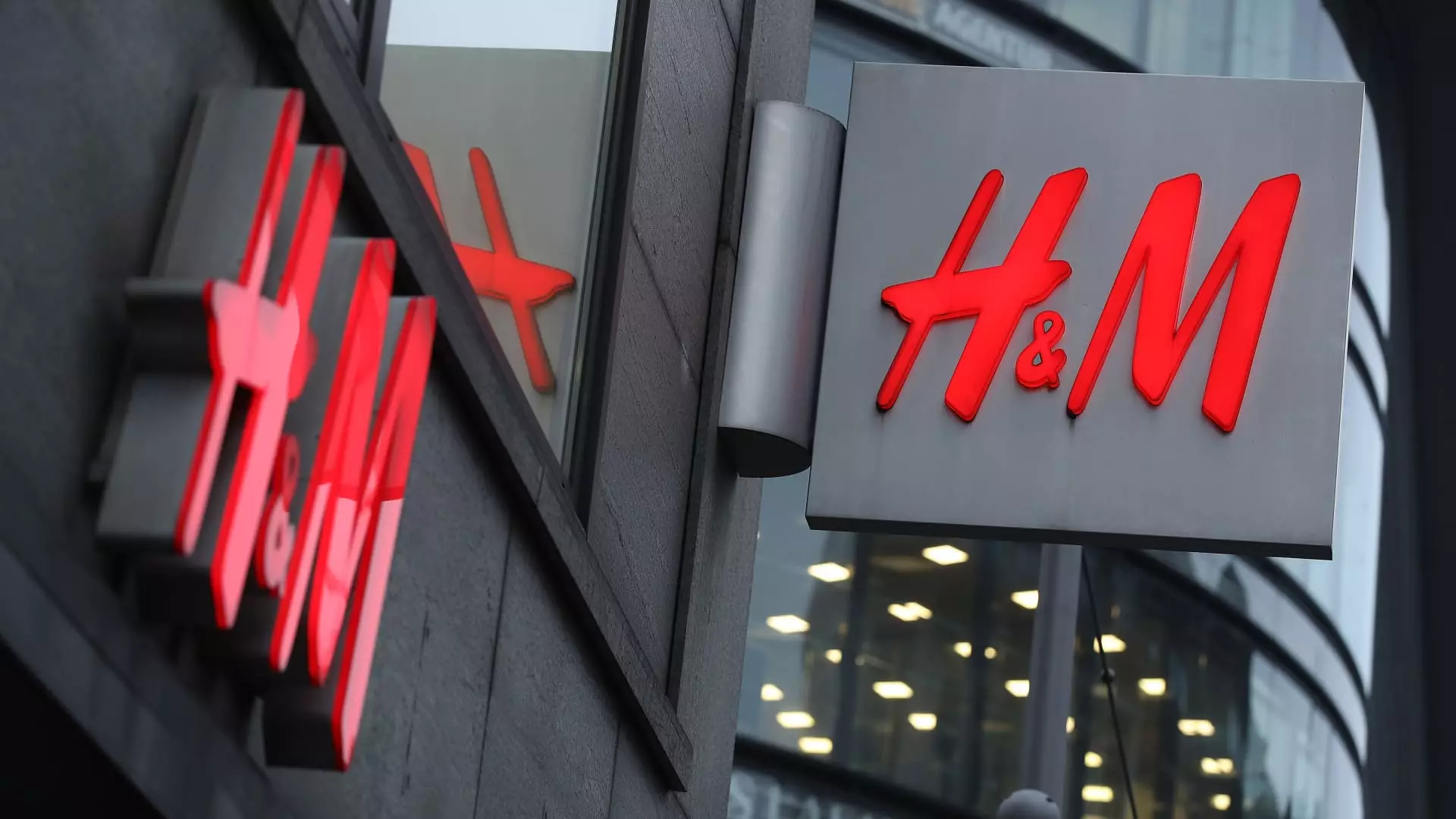On Thursday, H&M, the globally recognized fashion retailer, faced a steep decline in its share prices, plummeting as much as 8%. This downturn came after the company announced disappointing results in its fiscal third quarter, showcasing a significant drop in operating profit. Investors anticipated a strong performance; however, the report revealed a stark reality that the anticipated profit of 4.93 billion Swedish crowns ($465 million) was not realized. Instead, H&M’s operating profit settled at only 3.51 billion crowns ($345.8 million), reflecting a drop from 4.74 billion crowns the previous year. Such a discrepancy triggered a wave of concern among investors and analysts alike, contributing to the market’s loss of confidence.
Adding to the tumult, H&M announced the abandonment of its earnings margin target for 2024 amid challenging market conditions. The company’s CEO, Daniel Ervér, who assumed leadership just eight months ago, is expected to navigate these turbulent waters. When he succeeded Helena Helmersson, Ervér promised to establish an “unbeatable value” proposition for customers while ensuring profitable growth. However, the current realities appear to contradict these ambitious objectives, increasing scrutiny and pressure on his leadership. With the fashion landscape constantly evolving, retaining customer loyalty while enhancing profitability has become increasingly complicated.
External Challenges and Competitive Pressures
H&M’s struggle to maintain profitability is not isolated but rather a symptom of broader market challenges. Factors such as cooler weather, surging living costs, and a general slowdown in consumer spending post-pandemic have severely affected both high street and luxury retail segments. Competition in the fast-fashion world has intensified, particularly from rivals like Inditex, owner of Zara, and rapidly growing entities such as Shein. These competitors are not only capturing market share but also posing a significant threat to H&M’s established market position.
Ervér acknowledged the adverse effects of external factors on sales during a recent statement, highlighting the estimated operating margin for the year dropping below 10 percent—a stark warning for stakeholders. Despite these challenges, he remains optimistic that the measures implemented will eventually lead to higher sales and profitability. However, analysts are less certain, pointing out that the company’s operational strategies, including an anticipated rise in markdown costs, might only compound these struggles. In their analysis, UBS also highlighted the increase in costs relative to sales and noted H&M’s plan to reduce its store count, a move indicative of a shift in strategy but also a sign of distress.
The outlook for H&M faces significant uncertainty, emphasizing the challenges of balancing customer needs with profitability in a challenging retail landscape. How the company navigates these hurdles under Ervér’s leadership will be critical in determining its future trajectory. Investors and consumers alike will be watching closely as the fashion giant attempts to regain its footing in an ever-competitive market.

Leave a Reply